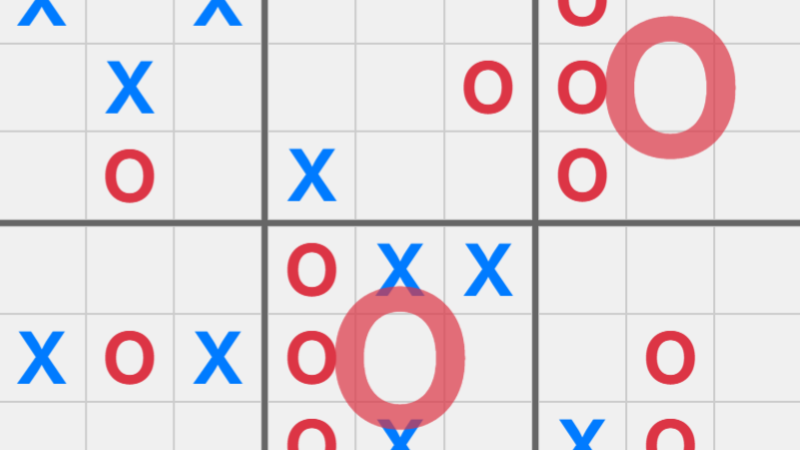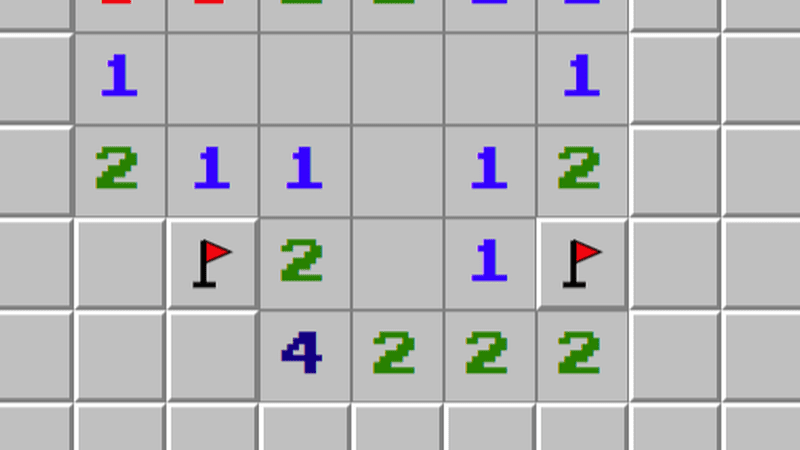Tic-Tac-Toe
Get three in a row to win.
How to Play Tic-Tac-Toe
Welcome to the classic game of Tic-Tac-Toe! This timeless strategy game pits you against our intelligent AI in a battle of wits on a 3x3 grid. While the rules are simple, mastering the strategy takes practice and careful thinking.
Basic Rules
- The Goal: Be the first to get three of your marks (X or O) in a row, column, or diagonal.
- Taking Turns: Players alternate placing their marks on empty squares. The starting player alternates each game.
- Your Symbol: You play as 'X' when you start first, and 'O' when the computer starts.
- Making Moves: Click (or tap on mobile) any empty square on the 3x3 grid to place your mark.
- AI Response: The computer will automatically make its move after you place yours.
- Winning: The first player to align three marks horizontally, vertically, or diagonally wins the round.
- Draw: If all squares are filled with no winner, the game ends in a draw.
Tips for Beginners
- Center First: If available, the center square (position 5) is often the strongest opening move as it's part of four potential winning lines.
- Corner Strategy: If the center isn't available, corners (positions 1, 3, 7, 9) are the next best options for opening moves.
- Block First: Always check if your opponent has two marks in a row. Your priority must be blocking their winning move.
- Look for Wins: Before making any move, check if you can win immediately by completing a line of three.
- Avoid Edges: The edge squares (positions 2, 4, 6, 8) are generally weaker opening positions unless used strategically.
- Think Ahead: Consider what your opponent might do after your move and plan accordingly.
Advanced Strategies
- Create a Fork: A "fork" occurs when you have two ways to win on your next turn. Try to set up situations where you threaten two different winning lines simultaneously, forcing your opponent into an impossible position.
- Block Opponent Forks: Watch for situations where your opponent might create a fork. Sometimes you need to force them to defend rather than attack.
- Center Control: The center square touches the most other squares and is part of the most potential winning combinations. Control it when possible.
- Corner Tactics: Placing marks in opposite corners can create powerful threats. If you have two opposite corners, you can threaten multiple winning lines.
- Force Defensive Play: Sometimes the best strategy is to create threats that force your opponent into defensive positions, limiting their offensive options.
- Pattern Recognition: Learn common winning and losing patterns to recognize advantageous positions quickly.
Controls & Accessibility
- Mouse/Trackpad: Click on any empty square to place your mark.
- Touch Devices: Tap any empty square on the grid. The game is fully optimized for mobile and tablet play.
- Restart Game: Click the restart icon to begin a new match at any time.
- Auto-Save: Game progress is automatically saved. You can safely refresh or leave the page.
- Responsive Design: The game adapts to your screen size for comfortable play on any device.
- Visual Feedback: Clear visual cues show whose turn it is and highlight winning combinations.
Benefits of Playing Tic-Tac-Toe
While Tic-Tac-Toe appears simple, it offers valuable cognitive and educational benefits:
- Strategic Thinking: Develop planning skills by thinking several moves ahead and considering multiple scenarios.
- Pattern Recognition: Learn to quickly identify winning opportunities and defensive necessities.
- Logical Reasoning: Practice cause-and-effect thinking as each move affects future possibilities.
- Spatial Awareness: Improve visualization skills by mentally tracking lines, rows, columns, and diagonals.
- Decision Making: Learn to evaluate options quickly and make optimal choices under pressure.
- Patience and Focus: Develop concentration skills and learn the value of careful consideration.
- Game Theory Basics: Understand fundamental concepts about optimal play and equilibrium strategies.
The History of Tic-Tac-Toe
Tic-Tac-Toe is one of humanity's oldest and most universal games. Archaeological evidence suggests similar games were played in ancient Egypt around 1300 BCE, with game boards carved into roofing tiles and temple steps. The Romans played a variant called "Terni Lapilli" (Three Little Pebbles), where players had only three pieces each that they moved around the board after placement.
The modern version with X's and O's on a 3x3 grid became popular in 19th-century Britain. The name "Tic-Tac-Toe" likely derives from the sound of pencils hitting slate boards, though it was also known as "Noughts and Crosses" in many English-speaking countries.
Tic-Tac-Toe holds a special place in game theory and computer science. It was one of the first games to be "solved" mathematically, proving that with optimal play from both sides, every game should end in a draw. This makes it an excellent teaching tool for introducing concepts of strategy, optimal play, and game analysis.
Despite its ancient origins, Tic-Tac-Toe remains relevant today as a learning tool for children and a nostalgic favorite for adults. Its simplicity makes it accessible to all ages, while its strategic depth ensures it never truly gets old.
Frequently Asked Questions
Can I always win at Tic-Tac-Toe?
If both players play optimally, every game should end in a draw. However, you can win if your opponent makes a mistake, and our AI occasionally plays less than perfectly to keep games interesting.
What's the best opening move?
The center square is generally considered the strongest opening move, followed by any corner. These positions offer the most potential winning lines.
Is there a way to guarantee a win?
Against perfect play, no. But you can maximize your chances by learning optimal strategies and capitalizing on opponent mistakes.
Why does the AI sometimes make seemingly random moves?
Our AI is designed to provide an engaging experience. While it plays strategically, it occasionally makes suboptimal moves to keep games winnable and fun.
How do I improve my Tic-Tac-Toe skills?
Practice recognizing patterns, study common fork setups, and always check for immediate wins or blocks before making any move. Playing regularly will help you internalize optimal strategies.






